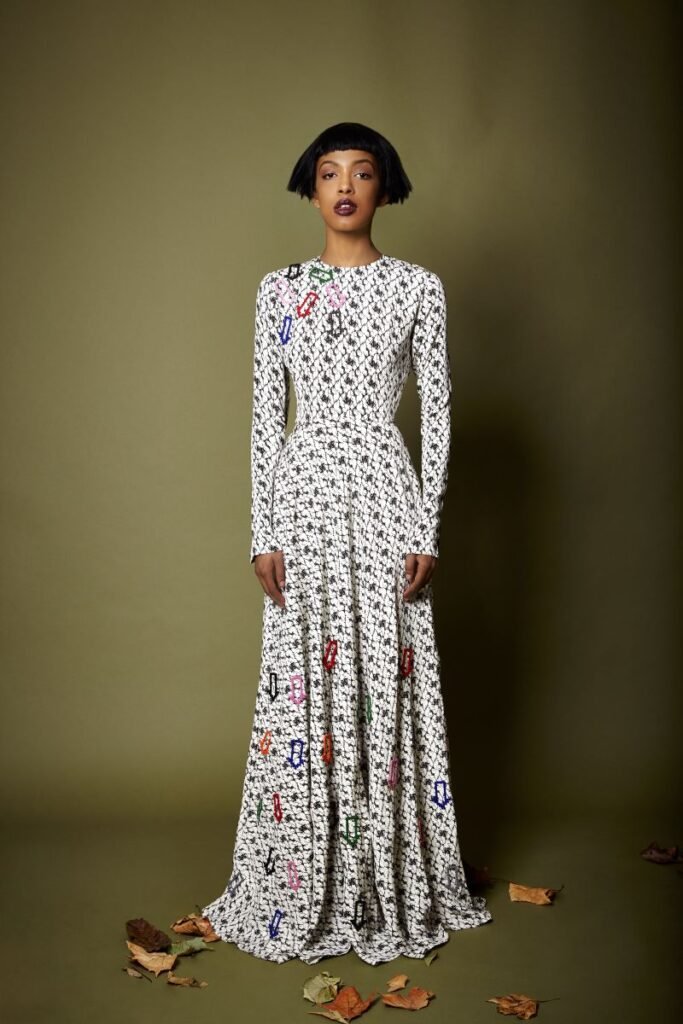In the ever-evolving world of fashion, African designers have continuously drawn inspiration from the rich tapestry of their continent’s culture. But today, a new trend is taking center stage: Afro-Minimalism. This burgeoning movement marries the bold colors, intricate patterns, and storytelling essence of traditional African aesthetics with the pared-down simplicity of global minimalism. The result? A revolutionary style that’s putting Africa at the forefront of modern, sustainable fashion.
What is Afro-Minimalism?
Afro-Minimalism strips African fashion down to its core elements. It’s a departure from the opulence of Ankara prints and extravagant beadwork, embracing clean lines, neutral tones, and subtle textures while maintaining the soul of African heritage. Designers like Nigeria’s Lisa Folawiyo and South Africa’s Thebe Magugu are leading the charge, creating pieces that feel both authentically African and universally modern.

This aesthetic shift appeals to a younger, global audience seeking versatility without losing a sense of cultural identity. It’s a balancing act that celebrates Africa’s diverse heritage while addressing contemporary tastes.
Sustainability Meets Style
One of the most significant drivers of Afro-Minimalism is the growing demand for sustainability. African designers are championing eco-conscious practices, sourcing local materials, and promoting slow fashion. Brands like Ghana’s Studio 189, co-founded by Abrima Erwiah and Rosario Dawson, prioritize ethical production while delivering timeless designs.
“Minimalism doesn’t mean erasing our history; it’s about distilling it,” says Erwiah. “We’re creating fashion that respects both our environment and our ancestors.”

Afro-Minimalism also intersects with the rise of gender-neutral fashion. Designers are reimagining traditional African garments—like the Senegalese boubou or the Kenyan kikoi—into contemporary, unisex pieces. This inclusivity broadens the appeal of African fashion, allowing it to resonate with global markets and challenge norms.
Though Afro-Minimalism favors simplicity, it never abandons storytelling. Designers weave narratives through understated details—like the use of Adire fabric in muted tones or subtle embroidery inspired by tribal markings. These elements preserve the depth and authenticity of African artistry, even in its most minimal forms.
The Global Stage
The international fashion scene is taking notice. At Paris Fashion Week, brands like Wales Bonner infused their collections with Afro-Minimalist elements, proving that African fashion is not a fleeting trend but a mainstay in global haute couture. Influencers, too, are embracing the movement, with sleek Afro-Minimalist outfits dominating platforms like Instagram and TikTok.

While Afro-Minimalism is reshaping perceptions, challenges remain. The global fashion industry often pigeonholes African designers into “traditional” roles, overlooking their innovation. Furthermore, the high cost of sustainable materials can limit accessibility for local consumers. To thrive, the movement must continue advocating for inclusivity and affordability.
Afro-Minimalism is more than a trend; it’s a testament to African fashion’s resilience and adaptability. By blending tradition with modernity, it bridges cultures, redefines narratives, and sets the stage for Africa to lead in global fashion innovation.
As designers continue to push boundaries, one thing is clear: the future of fashion is African, and it’s beautifully minimal.



